Imperial Dining - Easter in Imperial Times
Dining at Easter
Russian Easter in Imperial Times
by Nick Nicholson
In the US in the twentieth century, several cookbooks made important marks on the American public. The Joy of Cooking, first published in the thirties, demystified simple cooking techniques, allowed regional American cooking to be sampled and experienced around the country, and urged Americans to wean themselves from canned and processed food in favor of fresh ingredients. The second, Mastering the Art of French Cooking by Julia Child, first published in the sixties, allowed adventurous American home chefs access to the classical cooking of France, formerly isolated to expensive restaurants. In the eighties and nineties, we were treated to the obsessive-compulsive masterworks of Martha Stewart, whose achievements and failings should be discussed somewhere else entirely.
In Russia in the nineteenth century however, there was only one woman in the kitchen, and her name was Elena Molokhovets.
Molokhovets' Podarok molodym Khozjaikam [A Gift to young Housewives, published first in 1864] was more than just a cookbook - it was a guide to Russian life. Molokhovets' work, continually updated until the revolution, included sections on household management and housekeeping, servant management, food keeping and preparation, and it included menus ranging from simple everyday meals for family and servants, to light entertaining, Orthodox fast day menus, and the highlight of her cookbook and her year; the Russian Easter Day Feast.
At no other time of the year was the feast so important to Russians. Fasting on Saturday culminated in the long late night vigil and Easter mass, and on returning home, the consumption of an enormous buffet supper designed to feed a family of at the very least, 10-12 persons.
The table, Molokhovets instructed, was to be set with a fine cloth "of blazing whiteness" and with the best porcelain and silver the family could afford. The centerpieces were composed of large piles of expensive fruits (miniature grapes, clementines and tangerines, plums and pears - fruit obtainable in the early Russian spring only at great cost), potted hyacinths, forced lilies-of-the-valley and narcissus, Easter Eggs, as well as individual bouquets for each guest." The meal was laid on the table all at once, and most of the foods were prepared ahead of time, to allow the family and the servants to attend services without worry. Here is Mme. Molokhovets' Easter Menu, followed by her recipe for "Royal Paskha" the creamy sweetened cheese cake which is the traditional Easter dessert, served with "Kulich" a brioche-dough based, saffron-scented bread."
EASTER DINNER
Paskha, Kulitch, Babas, Mazurkas, Pljatski, Tortes
Decorated Eggs
Lamb made from butter
Boar's Head, Baked Ham
Boiled salted ham, Stuffed Turkey
Cold Roast Hare, Roast Veal, Wood Grouse
Cold Roast Antelope or Venison, Roast Elk, Roast Marinated Beef
Stuffed Suckling Pig
Black and White Bread, Horseradish, mustard, vinegar, olive oil plain and with garlic
Flavored vodkas and French Wine
Cress Salad on wooden statuettes, summer-house from Cress
Baumkuchen
PASKHA
Paskha, without which no Russian Easter is complete, is traditionally made by pouring it into a wooden form, from which it is unmolded to stand tall and pyramid-shaped. These molds are very hard to find in the US, and so I recommend using a clean (i.e. new and thoroughly washed) terracotta flowerpot which is very tall, with as narrow a base and as wide a rim as possible.
PASKHA TSARSKAJA
(Royal Paskha)
Place in a large saucepan 5 lbs. finely sieved fresh farmer's cheese (see note 1), 10 raw eggs, 1 pound fresh unsalted butter, and 2 pounds very fresh sour cream. Set on top of the stove (see note 2) stirring constantly with a wooden spatula so the mixture does not burn. As soon as the cheese begins to boil - that is, as soon as even one bubble appears - immediately remove it from the fire, set on ice (see note 3) and stir until it is completely cool. Add 1 pound Sugar ground with 1 vanilla bean (see note 4), 1/2 glass blanched almonds, and 1/2 glass currants (see note 5). Mix everything thoroughly, pile into a large mold with a napkin, and add weights. (See note 6).
#1. Farmer's cheese (pot cheese) is available at most good markets and cheese shops. If it is very wet, it is advised to wrap it in cheesecloth, and hang it for several hours to drain. Once it is the moisture level of, say, very dry cottage cheese, or cream cheese, pour it into and force it through a fine sieve to give it a creamy texture.
#2 Cook over a medium flame. Pay careful attention to the constant stirring. The ingredients must be fully mixed, and not allowed to burn.
#3 Place the PAN with the mixture in it into a bowl of ice and water to cool the mixture, and stop the cooking process. DO NOT pour the mixture into ice water. (It has happened!)
#4 The best way to do this is several days in advance. Slice open a fresh Vanilla bean, and combine it with a pound of sugar. Leave it in a sealed container for a week or so before incorporating the vanilla sugar into the mixture. Play with the amount of sugar; Molohkovets' recipe asks for 1-2 pounds. I prefer the smallest amount. It gets too sweet.
If you don't have time to make vanilla sugar, add 1/2 teaspoon vanilla extract, and the seeds of one vanilla pod to the mixture.
#5 A Russian princess I know makes a version where she adds no nuts or currants, but adds the zest of one lemon. I myself use no nuts, but use the lemon zest and currants (dried golden currants). Should you choose to make this according to Molokhovets' recipe, be aware that in Imperial Russian measurements, one glass is .46 US Pint, so one half a Russian glass is approximately 1/4 cup. The Russian pound is actually .9 US pound, so using this recipe with US pounds just gives you enough for 14-16 people instead of 10-12 people.
#6 Soak cheesecloth in water, squeeze it dry, and line the flowerpot with it. Pour the mixture in, and cover with cheesecloth. Place a dessert or salad plate on top of the flowerpot and weight it with a heavy object. Put it in a bowl in the refrigerator overnight. Make sure the flowerpot is lifted slightly, so that liquid water will drain into the bowl. Don't let the Paskha sit in water. To serve, unmold onto a plate, remover the cheesecloth, and decorate the top and the plate with fresh flowers. I also serve a sauce made from raspberries and blackberries.
HAPPY EASTER!!!
Elena Molokhovets' book has been translated in an incredible scholarly version by Joyce Toomre as:
Toomre, Joyce Classic Russian Cooking
Indiana University Press, Bloomington & Indianapolis, 1992
ISBN 0-253-36026-9 (hardcover)
ISBN 0-253-21210-3 (paperback)
Please send your comments on this page to Nick Nicholson
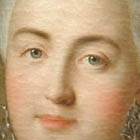
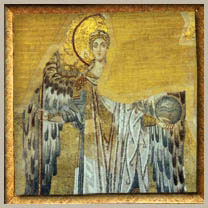



 Imperial Bedroom
Imperial Bedroom Portrait Hall
Portrait Hall Mauve Room
Mauve Room Maple Room
Maple Room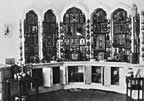 Aleksey's Bedroom
Aleksey's Bedroom Nicholas's Study
Nicholas's Study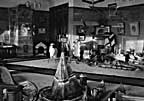 Aleksey's Playroom
Aleksey's Playroom Formal Reception
Formal Reception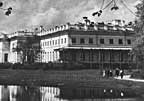 Balcony View
Balcony View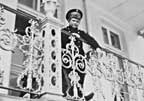 Aleksey- Balcony
Aleksey- Balcony Children-Mauve
Children-Mauve Nicholas's Bathroom
Nicholas's Bathroom Alexandra- Mauve
Alexandra- Mauve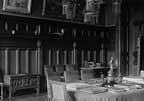 Nicholas's Reception
Nicholas's Reception Tsarskoe Selo Map
Tsarskoe Selo Map